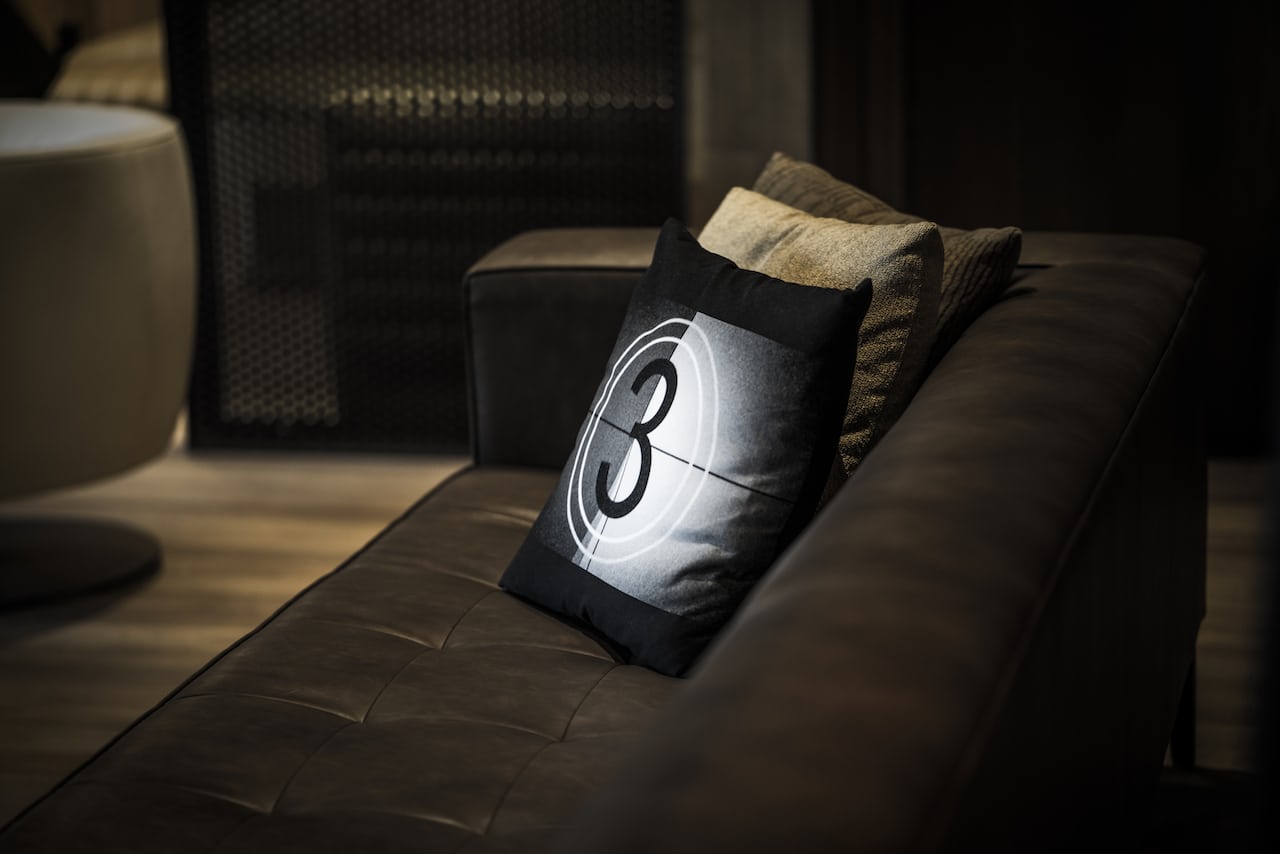
How to clean a leather sofa at home?

Leather furniture is an elegant detail in the interior and a sign of wealth. To ensure it remains pleasant for many years, take proper care of and clean it. We will tell you how to properly clean a leather sofa at home.
Rules for caring for leather furniture.
- The surface of leather has a porous structure, so the dust that settles gradually penetrates the material, making it increasingly difficult to remove. To prevent this from happening, vacuum the sofa once a week.
- Regularly wipe the sofa with a damp cloth; thick percale or flannel are suitable for this purpose. Don't forget about the folds and seams, as they always accumulate a lot of dirt.
- Periodically check for stains or scratches on the sofa. The sooner you find the "defect," the more likely you are to get rid of it.
- All food and drinks leave a mark on your leather, so try to keep them as far away from the sofa as possible. This is especially true for baby food. If you spill something on the sofa, blot the liquid with a soft, dry cloth; the key is to prevent it from being absorbed by the material. If you find a cut, cover it with liquid leather.
- Apply a leather care product, such as leather conditioner, to your leather once a year to add shine and prevent the surface from drying out.
Tips on how to properly clean your leather sofa
Perform the first cleaning of your leather sofa immediately after purchase. Use a special cleaning agent and a soft brush for this. After a couple of minutes, wipe away the residue of the product with a napkin.
When the surface is dry, apply a special cream. It's convenient to do this with a soft cloth. The cream will create a protective layer and make it easier to clean the sofa in the future.
For all subsequent cleanings, follow this sequence:
- Vacuum the surface.
- Remove any residual dust with a damp cloth.
- Check for debris. Treat stubborn stains with a special cleaning agent.
- Remove the agent and wipe the entire surface with a dry cloth.
- Apply a moisturizer or conditioner to your leather.
A steam cleaner can be an alternative to a vacuum cleaner. Go over the entire surface several times, stopping at the dirtiest areas. Then, wipe away excess moisture with a soft cloth.
If you notice a stain, apply the cleaner to the stain and blot it with a paper towel. Do not rub the leather with dirt, as this will only increase the size of the stain. And do not rub the surface for too long or too deeply: you can damage the material's structure by "rubbing" the pores.
Moist leather can easily develop mold or fungus, especially in poorly ventilated areas. Therefore, do not forget to clean the sofa with a dry cloth after you’ve cleaned it.
Leather sofa cleaners
Look at the documentation provided at the time of purchase; it will indicate what type of leather the sofa is upholstered with. Use this information as a guide when choosing a cleaning agent. Many manufacturers specify what can and cannot be used to clean a particular model.
If you have lost your documents, choose a neutral cleaner and test it in an inconspicuous area. Wait for the material to dry; sometimes, the defect may only appear on a dry surface.
Purchase a cleaner as soon as the sofa is in your home; do not wait until you find the first stain.
Homemade remedies for cleaning leather furniture
Small dirt can be removed with a soft cloth and soapy water. To prepare it, mix two tablespoons of liquid soap and one tablespoon of ammonia in a glass of water. You can use apple cider vinegar instead of soap.
Soak a cloth in this solution and wipe the surface, then go over it again with a dry cloth.
Cosmetic milk will help remove stains from the leather. Apply the product to a rag and go over the contaminated area, then remove the residue.
Removing stains from leather furniture
Accumulated dust can be easily removed with water and regular soap, but there are stains that need a "special touch." Let's find out how to deal with such contamination.
Grease stains
If the stain has just appeared, sprinkle it with salt and let it sit for 10-15 minutes. Then remove the salt and clean the leather with a soft cloth.
Baking soda will work for old stains. Dissolve one tablespoon of baking soda in a glass of warm water, stir, and then wipe the stain with this solution until foam forms. Remove the remaining foam with a tissue and repeat the process again.
Blood
Cold soapy water can help clean fresh blood from the sofa. Never use warm water - this way, you "set" the stain in the leather, and it will be ten times harder to remove.
A dissolved aspirin tablet in a glass of water will help against dried blood stains. If you can't remove the stain the first time, go over it with the solution again.
Paints or markers
An alcohol solution will help against marker or pen stains. Soak a cotton ball and gently remove the stain. Do not use acetone for cleaning, as it can ruin the leather.
Alcohol tends to evaporate oils, so make sure to apply a conditioner or moisturizing cream after cleaning.
Tea, juice, or coffee stains.
If you spill tea or coffee on the leather sofa, vodka, isopropyl alcohol, or perfume will help. Wipe the leather with a dry cloth to remove excess moisture and then sprinkle with salt. After a couple of minutes, brush away the salt and go over the stain with a cotton ball soaked in alcohol.
Red wine stains are the hardest to remove. The sooner you clean the sofa, the more likely you are to save it.
Wax or gum
Regular ice will help clear the sofa of traces of chewing gum or wax. Wrap it in cellophane or a thin cloth and apply it to the stain. Wait for 10 to 15 seconds and then remove the stain with the blunt side of a knife.
How to remove mold and fungus from a leather sofa
Fungi or mold on leather furniture appear due to high humidity in the house or excess moisture on the surface after wet cleaning or spilled drinks.
A vinegar solution will help combat mold. Mix at a ratio of 1 tablespoon per 100 ml of water. Wipe the infected surface with a cotton ball soaked in the solution and then remove the residue with a dry cloth; this should be done before it absorbs into the leather. An alternative to vinegar can be a special anti-mold remedy. It is easy to find in a furniture store.
Periodically check your sofa for mold: the longer it "lives" on the leather, the harder it will be to remove.
How to clean a white leather sofa
A white sofa looks more impressive than its black "brother," however, it is much more difficult to care for.
If you prefer homemade remedies, use a mixture of beaten egg white and half a glass of milk for cleaning. Dampen a rag and wipe the surface of the sofa.
Warm milk, ammonia, or vinegar in a low concentration will tackle fresh grease stains. For light stains, toothpaste will help: apply a little toothpaste to a soft-bristled brush and gently clean the stain.
After cleaning, do not forget to apply a moisturizer: it will prevent the leather from drying out and protect it from dust and high temperatures.
What not to use to care for leather furniture.
When choosing a cleaning agent, immediately exclude regular stain removers, abrasive particle detergents, grease-cutting dish gels, and chlorinated products from the list. The same goes for hard cloths and brushes.
Never use sharp objects. Leather cuts and scratches easily; to remove marks, you will have to buy a special product.
Caring for leather furniture after cleaning.
Leather upholstery loses its elasticity over time and begins to crack; this happens because natural oils evaporate from the surface. Use a moisturizer like lotion or conditioner to slow down this process.
Maintain moderate humidity indoors, ideally no more than 70%. Dry air is also bad for leather: it can dry out the material and cause cracks.
Keep your leather sofa away from radiators and direct sunlight. Do not place the sofa less than a meter away from a radiator or heater.
If you plan to be away for a month or more, place a special cover made of natural material over the sofa. It will prevent dust from accumulating on the surface.
The secret to the durability of a leather sofa is prevention. At least once a month, clean with a damp cloth and a solution over the entire surface, and once a week check for new stains. And then, your leather sofa will serve you for many years and retain its presentable appearance for a long time.
